You can find Shiva temples in almost every state of India. Lord Shiva, also revered as Mahadev (Lord of Lords), is considered the supreme power in Hinduism and is deeply worshipped by devotees across the country. He is known by many names such as Shankar, Maheshwara, Rameshwaram, and Mahakal, and scriptures mention that he has a total of 1008 names.
From Kashmir to Kanyakumari, hundreds of temples dedicated to Lord Shiva can be found, including the sacred 12 Jyotirlingas, which draw pilgrims from all over the world. During the holy month of Sawan, Shiva temples come alive with devotion—offered milk, bael leaves, and fruits, while the shrines are adorned with vibrant flowers.
Popular Shiva temples in India
To help you plan your spiritual journey, we have curated a list of some of the most popular Shiva temples in India. Each temple has its own unique history and significance, making every visit a truly divine experience.
Amarnath Temple, Jammu & Kashmir
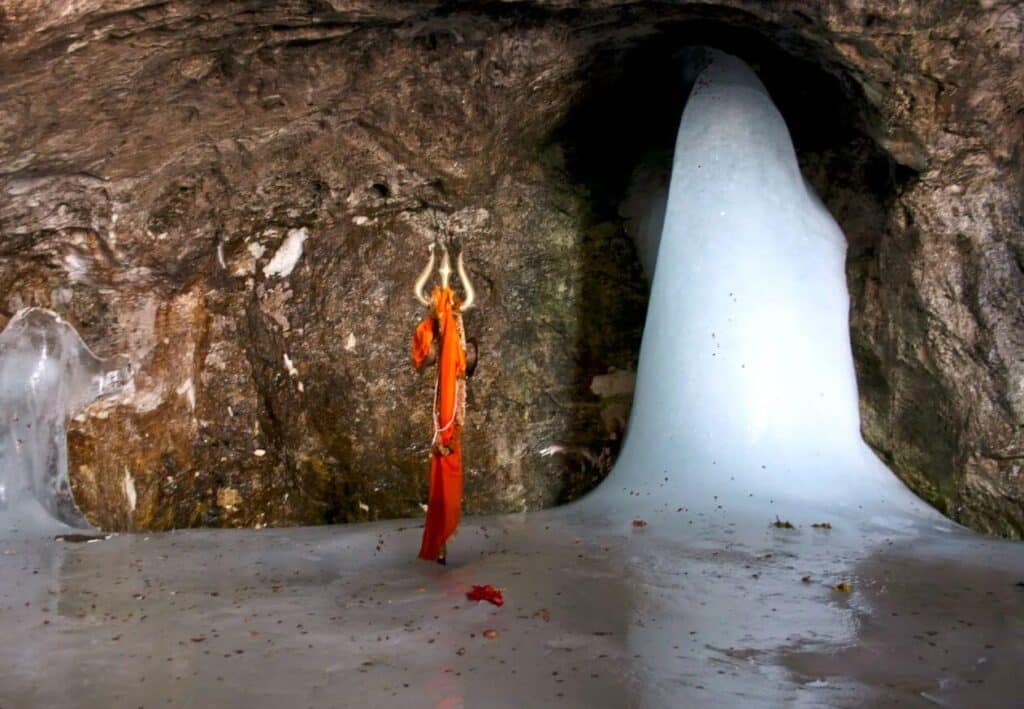
Nestled high in the Himalayas, the Amarnath Temple is one of the most sacred shrines of Lord Shiva in India. Situated at an altitude of 3,888 meters, this holy cave attracts thousands of devotees every year despite its challenging terrain. The temple is especially revered for the naturally formed ice Shiva Linga, which appears once a year, making it a truly divine spectacle for pilgrims. Undertaking the Amarnath Yatra is considered one of the most pious journeys for Shiva devotees.
Best Time to Visit: Entry is only allowed through pre-registration, with dates announced by the Jammu & Kashmir authorities (usually between June and August).
How to Reach: The nearest road connectivity ends at Pahalgam, accessible from both Jammu and Srinagar. From there, pilgrims travel to Chandanwari, the starting point of the trek to the holy cave.
Kedarnath Temple, Uttarakhand
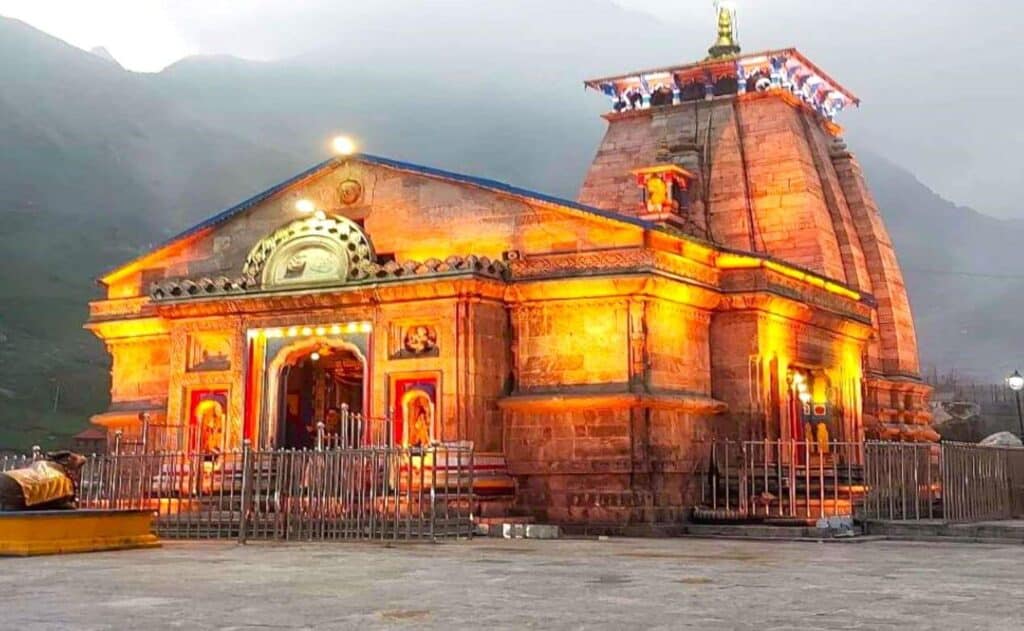
Perched high in the Garhwal Himalayan range, the Kedarnath Temple is one of the most revered shrines of Lord Shiva and a vital stop in the Char Dham Yatra (along with Badrinath, Gangotri, and Yamunotri). Often described as a reflection of heaven on earth, this ancient temple sits amidst snow-clad peaks and breathtaking natural beauty.
Since the temple is located at a high altitude, it remains closed during the winter months and opens only from April to November. Reaching Kedarnath is a spiritual adventure in itself, as pilgrims must trek nearly 22 km through scenic yet challenging terrain to seek blessings from Lord Shiva.
Best Time to Visit: April to November, when the temple is open to devotees.
How to Reach: The nearest major bus stand is at Guptkashi, which is well connected to Rishikesh and Haridwar. From Guptkashi, pilgrims travel further and begin the trek towards Kedarnath Temple.
Kashi Vishwanath Temple, Varanasi
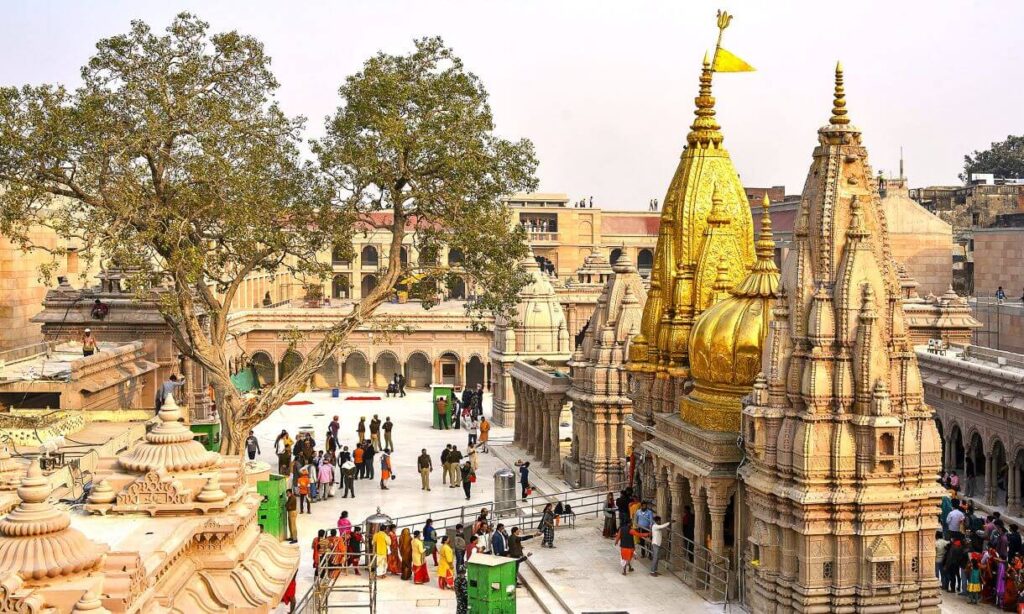
Located in the spiritual capital of India, Varanasi (Uttar Pradesh), the Kashi Vishwanath Temple holds immense significance in Hinduism. It is believed that those who take their last breath in Kashi attain Moksha (liberation from the cycle of rebirth). Dedicated to Lord Shiva, this temple is considered a sacred refuge for his ardent devotees and has been a center of faith for centuries.
The temple comes alive during Maha Shivratri, when it is beautifully decorated with flowers and celebrated with grandeur. Visitors are also encouraged to witness the mesmerizing Ganga Aarti at Assi Ghat, located nearby and connected via the temple corridor, making the experience even more divine.
Best Time to Visit: November to February, when the weather is pleasant for spiritual exploration.
How to Reach: Varanasi is well connected by air, rail, and road. Trains and flights from all major cities in India make the journey convenient for pilgrims.
Kailash Nath Temple, Ellora
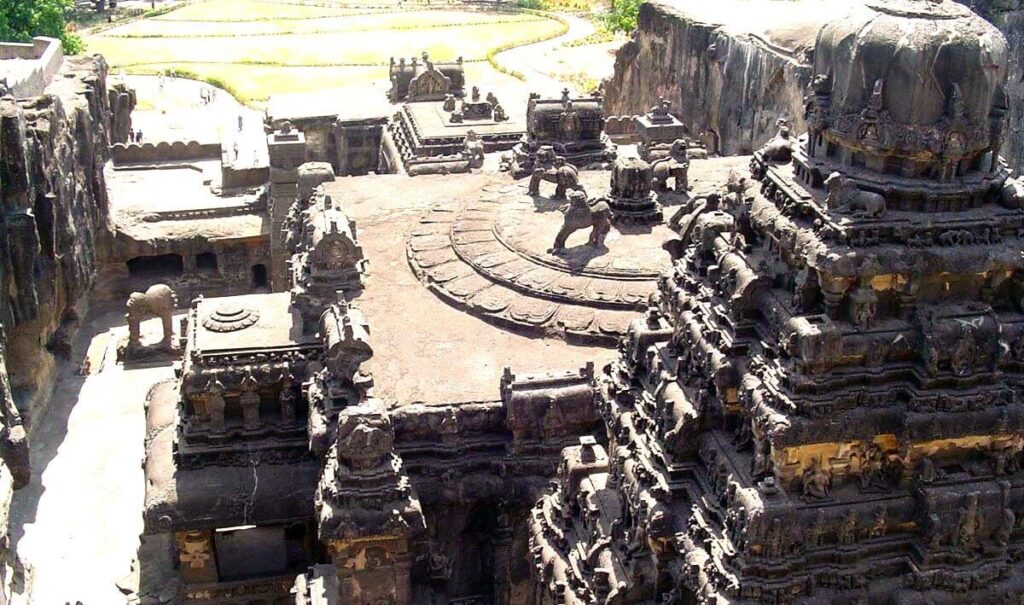
The Kailash Nath Temple in Ellora, Maharashtra, is one of the most magnificent temples dedicated to Lord Shiva and a masterpiece of ancient Indian architecture. Built by the Rashtrakuta dynasty, this temple is carved entirely out of a single rock cliff, making it one of the largest rock-cut temples in the world. Among the 34 temples and monasteries in Ellora, Kailash Nath stands out for its sheer scale and intricate carvings, which later inspired the construction of many temples across India.
Visiting this temple is not only a spiritual journey but also an opportunity to witness the brilliance of ancient craftsmanship that has stood the test of time.
Best Time to Visit: June to March, when the weather is comfortable for sightseeing.
How to Reach: The nearest airport is Aurangabad’s Chikalthana Airport, from where you can hire a cab to Ellora.
Somnath Temple, Gujarat
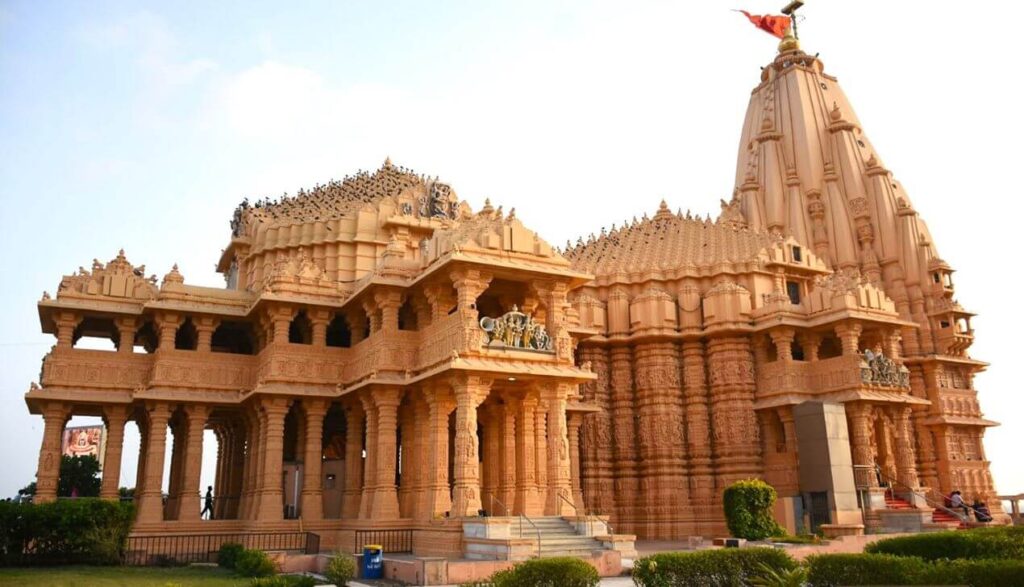
The Somnath Temple, located on the western coast of Gujarat, is one of the most renowned and sacred Shiva temples in India. It is considered the first of the 12 Jyotirlingas, making it a highly revered pilgrimage site for devotees. Over the centuries, the temple has faced multiple invasions and destruction at the hands of foreign rulers, but each time, it was rebuilt with even greater devotion.
The present structure, completed in 1951, is designed in the magnificent Chalukya-style architecture. A striking feature here is the Banasstambha (Arrow Pillar), erected on the temple walls, which has deep historical and symbolic significance. Adding to its charm, the temple offers breathtaking views of the Arabian Sea, creating a serene and divine atmosphere for visitors.
Best Time to Visit: October to March, when the weather is pleasant.
How to Reach: The nearest airport is Ahmedabad, from where you can take a government bus or hire a taxi to reach Somnath. The temple is also connected by rail, with the Somnath railway station located just 8 km away.
Brihadeeshwara Temple, Tamil Nadu

Located on the banks of the sacred River Kaveri in the Thanjavur district of Tamil Nadu, the Brihadeeshwara Temple is a stunning example of Dravidian architecture. Dedicated to Lord Shiva, this architectural marvel was built in 1001 AD by the great Chola king Raja Raja Chola I. Today, it stands proudly as a UNESCO World Heritage Site, celebrated for its grandeur and historical importance.
The temple’s Vimana (tower), constructed entirely from granite, rises above the sanctum and is the tallest of its kind in South India. Inside, devotees can witness the largest Shiva Linga and Nandi statue in India, making the temple a must-visit for both spiritual seekers and history lovers. Among the many temples built by the Cholas, Brihadeeshwara holds the top place for its impeccable design, engineering brilliance, and artistic detail.
Best Time to Visit: October to March, when the weather is pleasant.
How to Reach: The nearest city is Thanjavur, well connected by road and rail to other parts of Tamil Nadu. The closest airport is Tiruchirappalli (around 60 km away), from where cabs and buses are available to reach the temple.
Sri Kalahasthi Temple, Andhra Pradesh
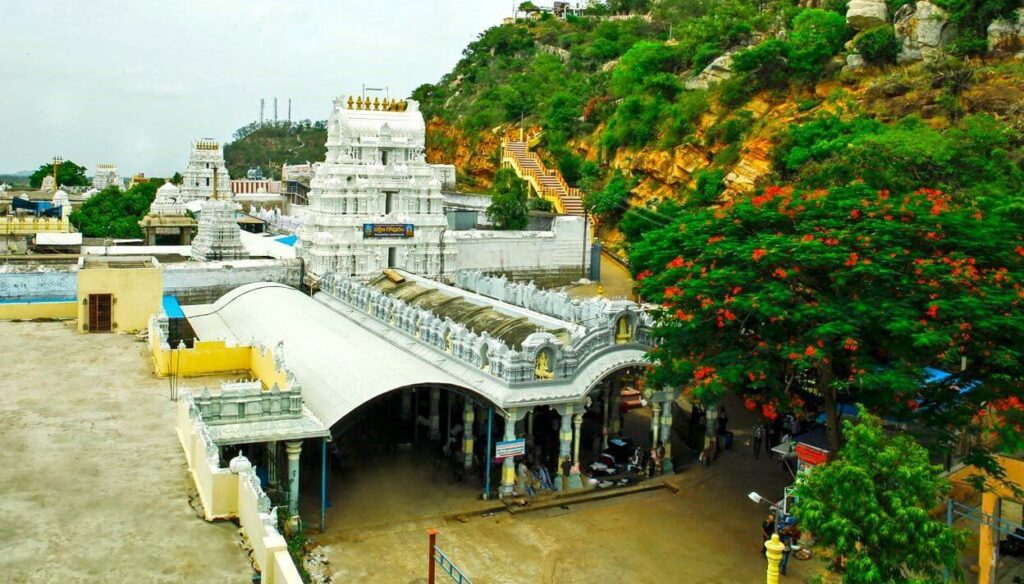
The Sri Kalahasthi Temple, located in the Chittoor district of Andhra Pradesh, is one of the revered Panch Bhuta Sthalas, where Lord Shiva is worshipped as Kalahasteeshwara. This temple is often visited by devotees after a pilgrimage to Tirupati, the abode of Lord Venkateshwara.
A well-known legend associated with the temple tells the story of Kannappa, a devoted follower of Shiva, who offered his own eyes to stop the bleeding from a Shiva Linga. Moved by his devotion, Lord Shiva appeared before him and granted him Moksha (liberation). This tale adds immense spiritual significance to the temple, making it a powerful place of worship for devotees.
Best Time to Visit: October to March, when the weather is ideal for temple visits.
How to Reach: The nearest airport is Tirupati (26 km away). The temple also has its own railway station, Srikalahasthi, making it easily accessible. Shared cabs and local taxis are readily available from both the airport and railway station.
Vadakkunnathan Temple, Kerala

Situated in the heart of Thrissur district, Kerala, the Vadakkunnathan Temple is one of the most revered Shiva shrines in South India. According to legend, the temple was built by the sage Parasurama, the sixth avatar of Lord Vishnu. Here, Lord Shiva is worshipped as Vadakkunnathan, making it an important pilgrimage site for devotees.
Built in the classic Kerala architectural style, the temple is crafted from wood and stone, with majestic towers on all four sides. A fascinating tradition here is the offering of ghee to the Shiva Linga, which over the centuries has formed a massive mound visible to worshippers. After the rituals, devotees receive ghee as prasadam, a unique blessing of this temple.
Best Time to Visit: April to May, especially during Maha Shivratri and the world-famous Thrissur Pooram festival, when the temple is decorated and celebrated with grandeur.
How to Reach: The nearest railway station is Thrissur, while the closest airport is Cochin International Airport. From there, local transport and cabs are easily available to reach the temple.
Murudeshwar Temple, Karnataka
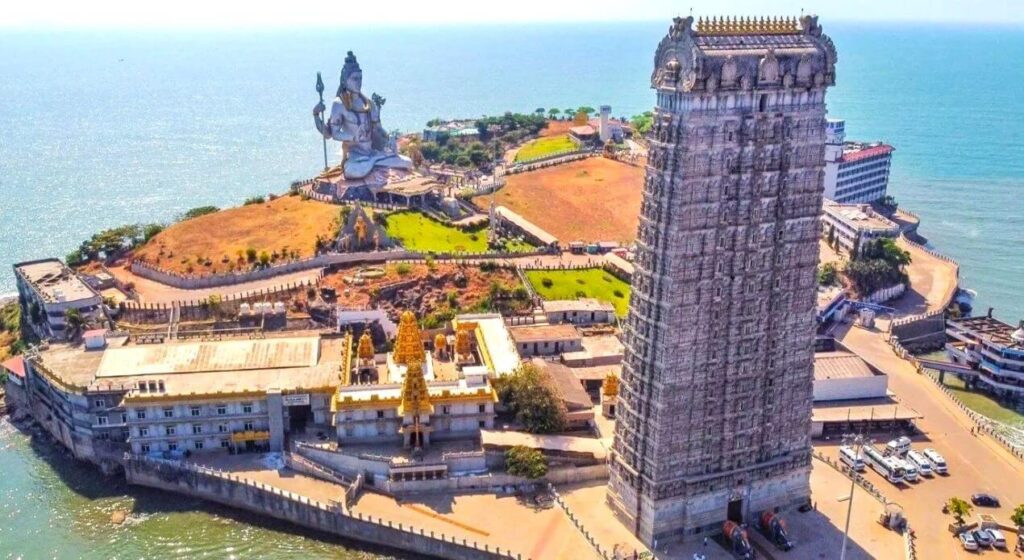
Located on the picturesque coast of northern Karnataka, the Murudeshwar Temple is world-famous for housing the second tallest statue of Lord Shiva. Overlooking the Arabian Sea, the temple offers breathtaking views, with its serene setting making it one of the most scenic Shiva temples in India.
The highlight of Murudeshwar is not only the majestic Shiva statue but also the 20-storey Raja Gopura built beside it. Visitors can take a lift to the top of the gopura to enjoy a panoramic view of the sea, temple, and surrounding landscape—a truly unforgettable experience. The combination of spirituality, art, and nature makes Murudeshwar a must-visit shrine for devotees and travelers alike.
Best Time to Visit: October to May, when the weather is pleasant for sightseeing.
How to Reach: The nearest airport is Mangalore (153 km away). The temple also has its own railway station, Murudeshwar, which is well connected to major cities across India.
Tarakeshwar Temple, West Bengal
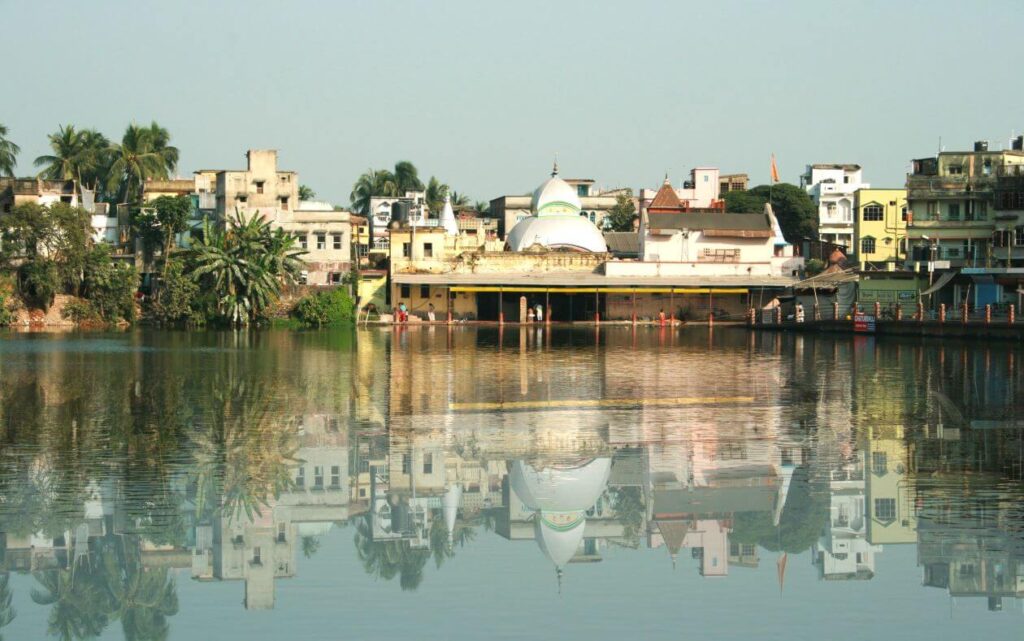
Also known as Baba Taraknath Temple, the Tarakeshwar Temple in the Hooghly district of West Bengal is one of the most visited Shiva shrines in Eastern India. Built in the 18th century by Raja Bharamalla, this temple is among the oldest and most revered in the region. Dedicated to Lord Shiva as Taraknath, the temple draws devotees throughout the year, with Mondays being especially crowded, as the day is considered sacred for Shiva worship.
The temple is a fine example of Bengal architecture, adorned with intricate carvings and murals that reflect the region’s traditional artistry. In front of the temple lies a sacred pond known as Dudhpukur, where pilgrims often take a ritual dip before entering the shrine.
Best Time to Visit: The temple is open to devotees throughout the year. Mondays and festivals like Maha Shivratri see the largest gatherings.
How to Reach: The nearest major city is Kolkata, which is well connected to the rest of India by air, rail, and road. From Kolkata, local taxis and cabs are easily available to reach Tarakeshwar Temple.
Nataraja Temple, Tamil Nadu
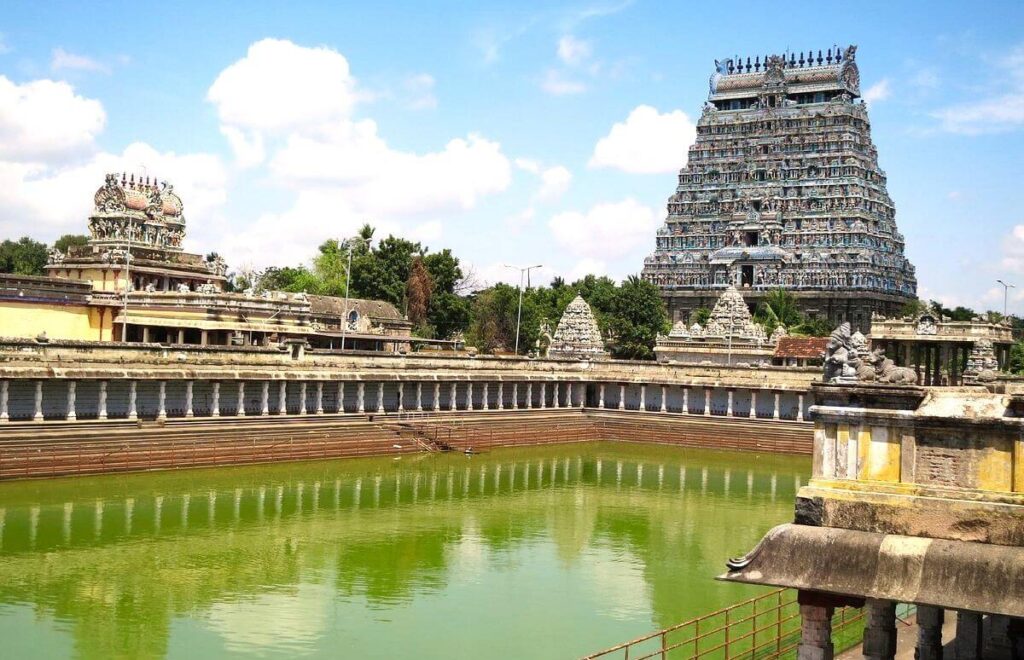
The Thillai Nataraja Temple, located in Chidambaram, Tamil Nadu, is one of the most iconic Shiva temples in South India. Built by the Chola dynasty in the 10th century AD, it is dedicated to Lord Shiva in his form as Nataraja—the Cosmic Dancer. The temple is a unique blend of spirituality and art, with the walls beautifully carved with 108 karanas (dance postures) of the Natya Shastra, making it a sacred place for devotees as well as artists.
Stepping into the temple, one can feel an extraordinary vibration in its chambers, often described as deeply spiritual and transformative. The temple also hosts the grand Nrityanjali festival during Maha Shivratri, where classical dancers from all over the country perform in devotion to Lord Shiva, making it an unforgettable experience.
Best Time to Visit: October to March, when the weather is pleasant.
How to Reach: The nearest airport is Tiruchirappalli (around 195 km away). Chidambaram is also well connected by railway lines to major cities across India.
Kotilingeshwara Temple, Karnataka
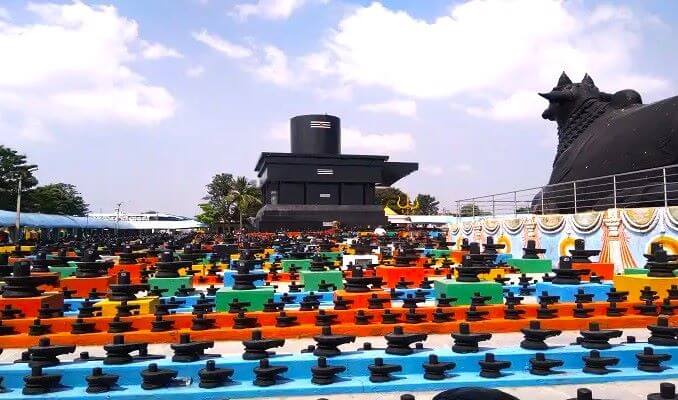
The Kotilingeshwara Temple, located in the Kolar district of Karnataka, is one of the most unique Shiva temples in India. True to its name—Koti meaning “crore”—the temple is home to an astonishing one crore Shiva Lingams, making it a sacred destination for devotees from across the world.
The highlight of the temple is the massive Shiva Lingam standing 33 meters tall, accompanied by an equally grand Nandi statue of 11 meters within the temple premises. In front of the temple, there is also a sacred water tank where devotees offer smaller lingams, adding to the temple’s spiritual aura.
Best Time to Visit: July to January, when the weather is favorable for pilgrimage.
How to Reach: The nearest airport is Bengaluru, which is well connected to major cities of India. The closest railway station is Coromandel, from where you can hire a cab or taxi to reach the temple.
Lingaraj Temple, Odisha
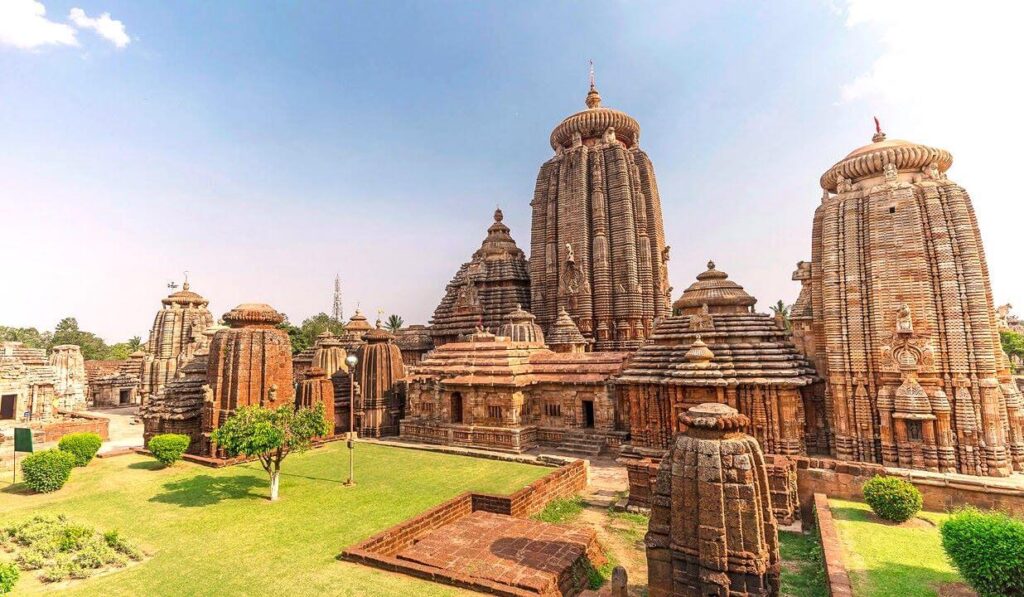
The Lingaraj Temple, located in the old town of Bhubaneswar, Odisha, is one of the grandest and most revered Shiva temples in India. A classic example of Kalinga architecture, this magnificent temple was built by the rulers of the Somavamsi dynasty and remains one of the largest temples in Bhubaneswar.
Constructed in the traditional Deula style, the temple complex includes a Vimana (sanctum tower), Jagamohana (assembly hall), Natamandira (festival hall), and Bhoga Mandap (hall of offerings). Its stunning architectural details and spiritual significance attract thousands of devotees and visitors every year, making it a key pilgrimage destination in Eastern India.
Best Time to Visit: January to March, when the weather is pleasant for exploring the temple and nearby sites.
How to Reach: The nearest city is Bhubaneswar, which is well connected by air, rail, and road to all major cities in India. Local transport options like taxis and auto-rickshaws are easily available to reach the temple.
Baidyanath Temple, Jharkhand
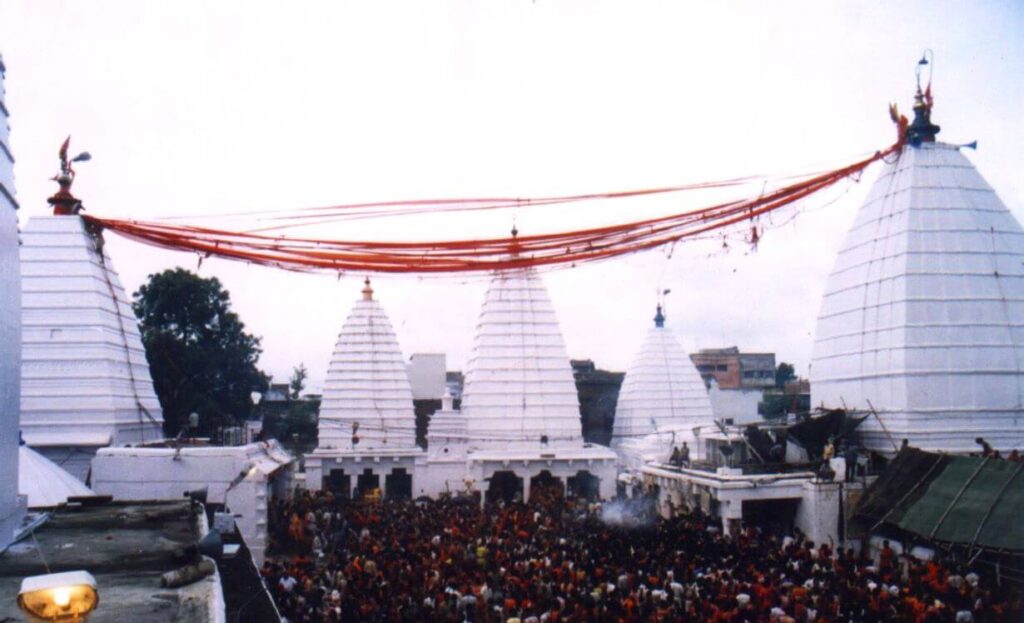
The Baidyanath Temple, located in Deoghar district, Jharkhand, is one of the twelve sacred Jyotirlingas and among the most revered Shiva temples in India. The name Baidyanath is derived from the Sanskrit word Vaidya, meaning “doctor,” symbolizing Lord Shiva as the divine healer.
According to legend, Ravana, the demon king of Lanka, performed intense penance here to please Lord Shiva. In his devotion, he is said to have sacrificed all ten of his heads, after which Shiva appeared as a healer (Vaidya) to restore him. This powerful myth gives the temple deep spiritual importance.
During the month of Shravan (July–August), the temple becomes the focal point for the Kanwar Yatra, when millions of devotees carry holy water from the Ganges to offer at the Jyotirlinga. The festive atmosphere and sheer devotion make this an unforgettable experience.
Best Time to Visit: March to August, with the peak pilgrimage season during the holy month of Shravan.
How to Reach:
- By Rail: The nearest railway station is Jasidih, well connected to major cities in North India.
- By Air: The closest airports are Patna and Ranchi, both around 250 km away. From there, taxis and buses are available to reach Deoghar.
Trimbakeshwar Temple, Maharashtra
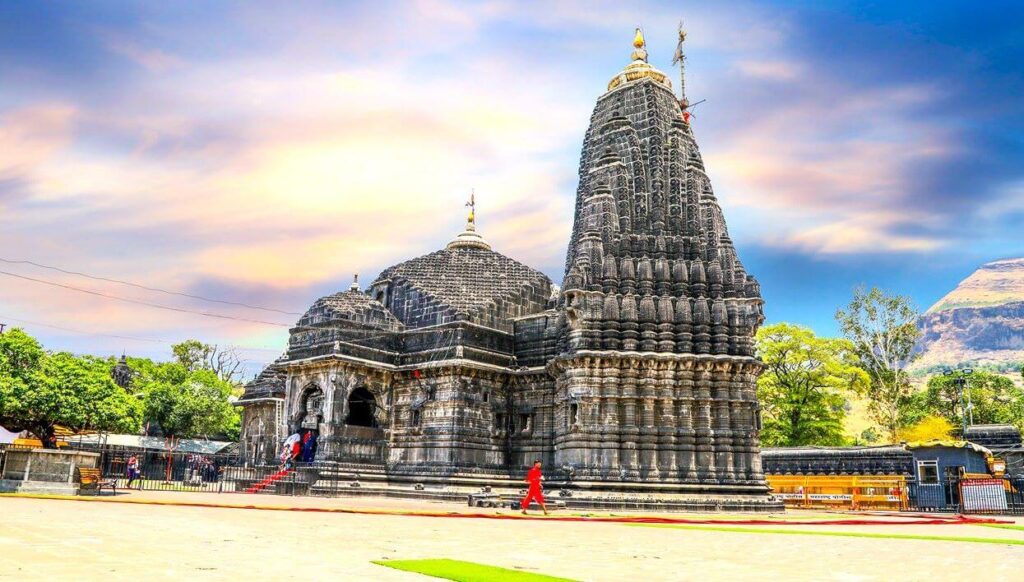
The Trimbakeshwar Temple, located in the Nashik district of Maharashtra, is one of the most revered and majestic Shiva shrines in India. It holds immense significance as one of the twelve sacred Jyotirlingas. Nestled at the foothills of the Brahmagiri mountain, this temple is also the origin point of the Godavari River, one of the holiest rivers in India.
What makes this temple unique is its linga with three faces, symbolizing the Trimurti – Brahma (the creator), Vishnu (the preserver), and Shiva (the destroyer). The current structure, built out of black basalt, was commissioned by Peshwa Balaji Baji Rao in the 18th century and stands as a fine example of Maratha temple architecture.
Trimbakeshwar is not just a pilgrimage spot but also a spiritual center where many important rituals like Narayan Nagbali, Kalsarp Dosh Nivaran, and Shraddh ceremonies are performed.
Best Time to Visit: October to March, when the weather is pleasant for both pilgrimage and sightseeing.
How to Reach:
- By Road/Rail: Nashik is well connected by rail and road to major cities in Maharashtra and India.
- By Air: The nearest major airport is Mumbai, about 160 km away. From Mumbai, regular buses and taxis are available to reach Nashik.
Mahakaleshwar Temple, Ujjain
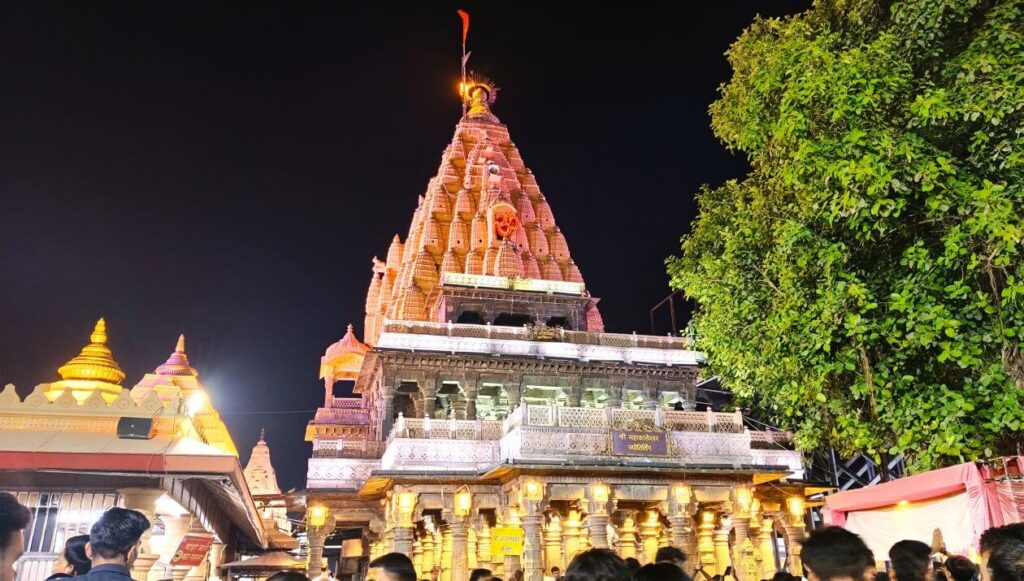
The Mahakaleshwar Temple, located in the Ujjain district of Madhya Pradesh, is one of the twelve Jyotirlingas of Lord Shiva and among the most sacred shrines in India. Situated on the banks of the holy Shipra River, this temple holds immense spiritual significance for devotees.
According to legend, the Shiva Linga here is Swayambhu, meaning it manifested on its own, without being established through rituals or mantras. Another unique feature of this temple is that it houses the only south-facing Jyotirlinga in the world, making it distinct from all other Shiva temples. The temple’s towering Shikhar (spire) and grand façade are a treat for history enthusiasts and devotees alike, reflecting both religious and architectural brilliance.
The temple is also renowned for its Bhasma Aarti, a ritual performed every morning where the deity is worshipped with sacred ash—a unique and spiritually uplifting experience for pilgrims.
Best Time to Visit: October to March, when the weather is pleasant and ideal for exploring Ujjain.
How to Reach:
- By Rail: Ujjain is well connected to major cities like Delhi, Mumbai, Bhopal, and Indore by regular trains.
- By Air: The nearest airport is Indore, about 55 km away, with frequent flights from major Indian cities.
- By Road: Ujjain has a good road network with buses and taxis available from nearby cities.
Bhimashankar Temple, Maharashtra
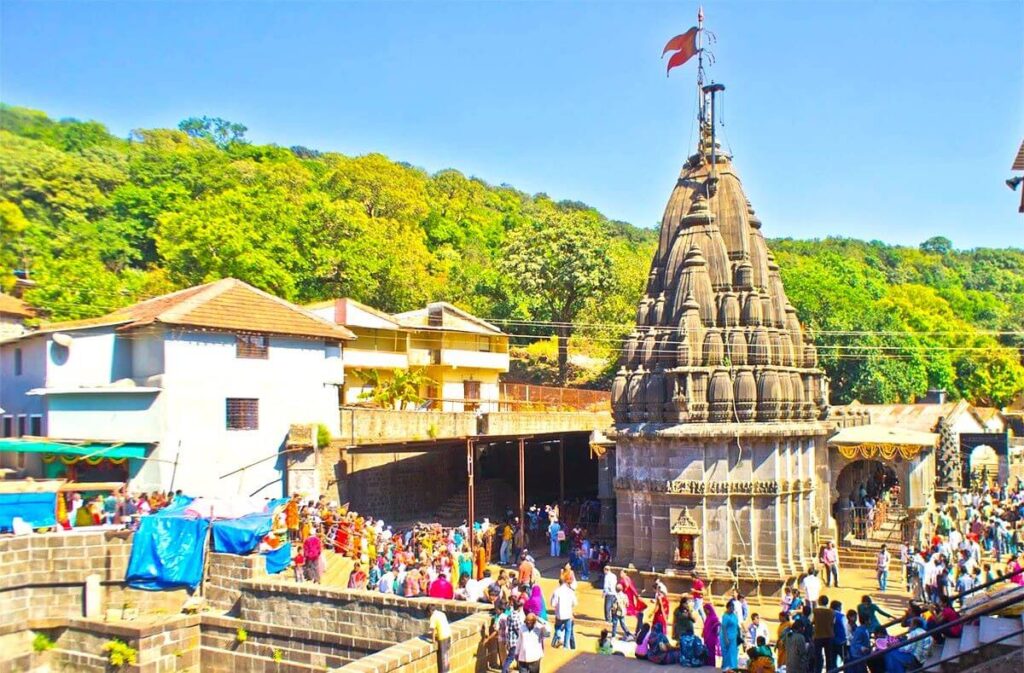
Nestled in the serene Sahyadri Hills, near Khed in the Pune district of Maharashtra, the Bhimashankar Temple is one of the revered 12 Jyotirlingas of Lord Shiva. Far from the city’s hustle, the temple offers a tranquil escape amidst misty hills and lush greenery.
Built in the 13th century AD, the temple is a fine example of the Nagara style of architecture, showcasing the brilliance of ancient Indian sculptors. Along with the sacred Jyotirlinga, visitors can also spot Buddhist carvings in the complex, highlighting its rich cultural heritage. Recently, the surrounding area has been declared a wildlife sanctuary, making it a haven for nature enthusiasts.
For adventure seekers, the temple adds a unique dimension, as the trek leading up to Bhimashankar combines spirituality with adventure, offering breathtaking views of the Sahyadris. The temple’s location atop the hill makes it a perfect spot for nature lovers, photographers, and trekkers.
Best Time to Visit: October to March, when the climate is pleasant for both pilgrimage and trekking.
How to Reach:
- By Air: Pune Airport (125 km) is the nearest.
- By Rail: Pune and Karjat are the closest major railway stations.
- By Road: Regular buses and taxis are available from Pune, Karjat, and Mumbai to Bhimashankar.
Tungnath Temple, Uttarakhand
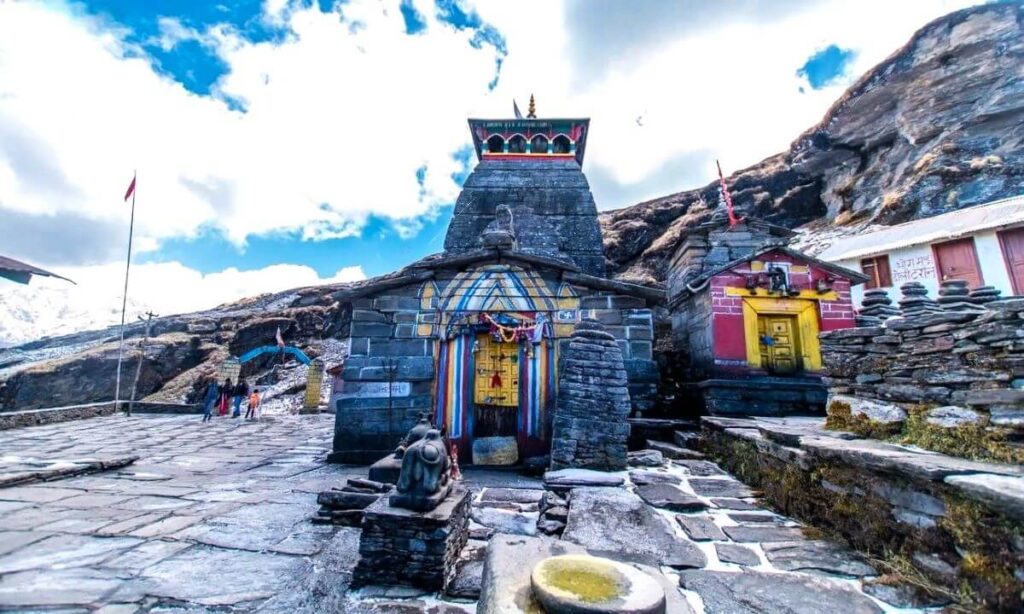
Perched at an altitude of 3,680 meters above sea level, Tungnath is the highest Shiva temple in the world. Located in the Rudraprayag district of Uttarakhand, this sacred shrine is also one of the revered Panch Kedar temples and is believed to date back over a thousand years.
According to legend, the foundation of this temple was laid by Arjuna, one of the Pandavas from the Mahabharata. Built in the North Indian architectural style, the temple houses several smaller shrines dedicated to other Hindu deities. Another tale suggests that Lord Rama meditated here to rid himself of the sin of Brahmahatya after slaying Ravana.
Apart from its spiritual significance, Tungnath is a paradise for trekkers and adventure seekers. The short but scenic trek from Chopta is filled with breathtaking Himalayan views, rhododendron forests, and serene meadows. Due to its high-altitude location, the temple remains closed during winter and opens only in the summer and monsoon months.
Best Time to Visit: May to October, when the trekking routes are accessible and the weather is pleasant.
How to Reach:
- By Road: Chopta is the nearest motorable town, connected to Rishikesh and Haridwar by bus or taxi.
- By Trek: From Chopta, a 3.5 km trek leads you to the Tungnath Temple.
Madhyamaheshwar & Omkareshwar Temple, Uttarakhand

Madhyamaheshwar Temple is one of the revered Panch Kedar shrines, located in Ukhimath, Uttarakhand. Nestled amidst the serene Himalayas, the temple is believed to bless every devotee who visits, with none returning empty-handed. Due to heavy snowfall in winter, the idols of Kedarnath and Madhyamaheshwar are ceremoniously shifted to Ukhimath, where they are worshipped for six months. This makes Ukhimath an important spiritual center during the winter season.
Another significant shrine here is the Omkareshwar Temple, one of the oldest Shiva temples in India. It serves as the winter abode of the deities from Kedarnath and Madhyamaheshwar. A fascinating feature of this temple is the sacred water that seeps naturally from its walls, believed to purify devotees completely—even a few drops are said to wash away sins.
Together, these two temples make Ukhimath a spiritually enriching destination for Shiva devotees, offering both divine blessings and a serene Himalayan atmosphere.
Best Time to Visit: Throughout the year (though winters are especially significant due to the idols being housed here).
How to Reach:
- By Road: Ukhimath is accessible only by road. Buses and shared taxis are available from Rishikesh and Haridwar.
- By Air: The nearest airport is Dehradun (Jolly Grant Airport), around 190 km away.
Bull Temple (Dodda Basavana Gudi), Bangalore
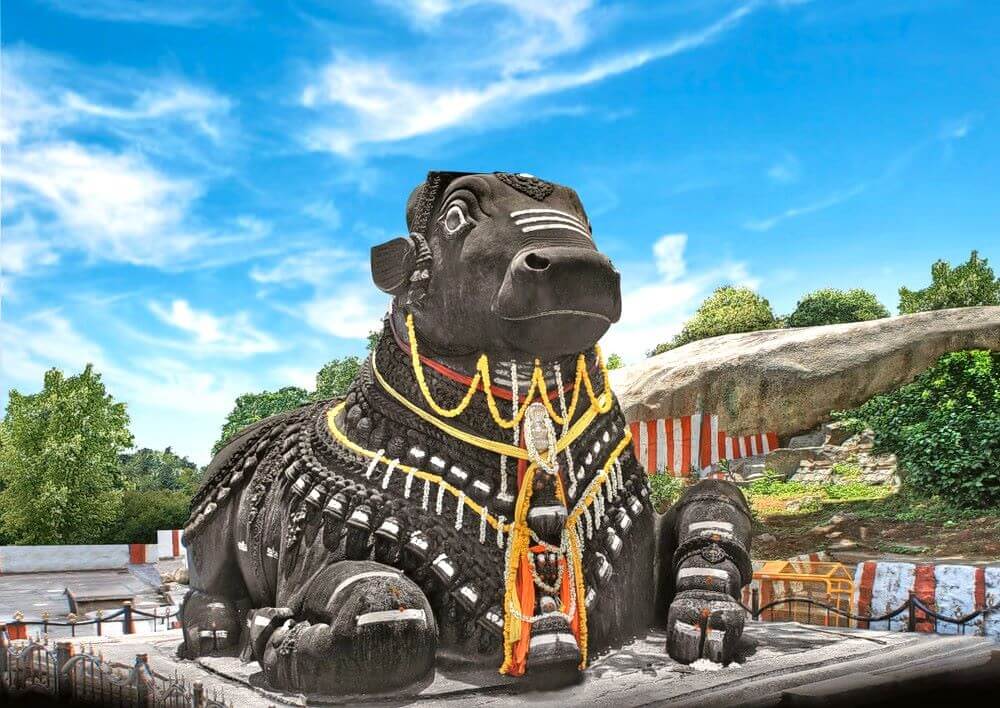
Popularly known as the Nandi Temple, the Bull Temple in Bangalore is one of the city’s oldest and most revered Shiva temples. Locally called Dodda Basavana Gudi, it is dedicated to Nandi, the sacred bull and divine vehicle (vahana) of Lord Shiva. As Nandi holds immense significance in Shaivism, the temple attracts countless devotees throughout the year.
Built in the Dravidian architectural style by Kempe Gowda, the founder of Bangalore, the temple also marks the origin of the Vrishabhavathi River, which is believed to flow from the feet of Nandi. The colossal Nandi statue here is carved from a single granite rock, measuring 4.5 meters in height and 6.5 meters in length. Regular offerings of butter and coconut milk have turned the idol’s natural grey stone into a striking black hue over time.
Inside the temple complex, there is also a shrine dedicated to Lord Ganesha, where the idol is uniquely made of butter. More than 110 kilograms of butter are used to craft the statue, which astonishingly remains intact for four years without melting. After every four years, the idol is remade, and the butter used is distributed among devotees as prasadam, adding a special charm to this sacred site.
Special Highlight – Kadalekai Parishe (Groundnut Fair)
One of the most famous events associated with the Bull Temple is the annual Kadalekai Parishe, or groundnut fair. Celebrated in November–December, this centuries-old tradition marks the first groundnut harvest of the year. Farmers from nearby villages bring their produce to offer it to Nandi before selling it at the fair. The temple and surrounding areas come alive with festivities, attracting thousands of devotees and tourists alike.
Best Time to Visit: September to March, when the weather is pleasant for temple visits.
How to Reach: Bangalore is well connected by air, rail, and road to all major cities in India. From anywhere in the city, visitors can hire a cab, auto-rickshaw, or take local transport to reach the temple conveniently.
Conclusion
India is dotted with countless Shiva temples, each with its own history, architectural brilliance, and spiritual significance. From the icy heights of Amarnath to the vibrant ghats of Kashi Vishwanath, from the grandeur of Brihadeeshwara in Tamil Nadu to the serene trekking route to Tungnath, every temple offers a unique experience that blends devotion, culture, and heritage.
Whether you are a spiritual seeker, a history enthusiast, or an adventure traveler, visiting these sacred shrines gives you a glimpse into India’s deep-rooted faith and traditions. Most importantly, devotees believe that a journey to these temples not only brings blessings of Lord Shiva but also fills the soul with peace and divine energy.
So, if you are planning a pilgrimage or simply looking to explore India’s rich temple culture, make sure to include some of these famous Shiva temples in your travel itinerary. Each visit will leave you with unforgettable experiences and a stronger connection to spirituality.
FAQs About Shiva Temples in India
Some of the most famous Shiva temples in India are the Kashi Vishwanath Temple in Varanasi, the Somnath Temple in Gujarat, and the Mahakaleshwar Temple in Ujjain. However, the 12 Jyotirlingas are considered the holiest shrines dedicated to Lord Shiva and attract millions of devotees every year.
There are 12 Jyotirlinga temples across India, which include Somnath, Mallikarjuna, Mahakaleshwar, Omkareshwar, Kedarnath, Bhimashankar, Kashi Vishwanath, Trimbakeshwar, Vaidyanath, Nageshwar, Rameshwaram, and Grishneshwar. These are considered the most sacred Shiva temples in India.
The best time to visit Shiva temples is generally from October to March, when the weather is pleasant. Many devotees also visit during the holy month of Sawan (July–August) and during Maha Shivratri, when grand celebrations take place at almost every Shiva temple.
The Tungnath Temple in Uttarakhand, part of the Panch Kedar temples, is the highest Shiva temple in the world. It is located at an altitude of 3,680 meters and is also a popular trekking destination.
The Shiva Linga is a symbolic representation of Lord Shiva’s cosmic energy. It signifies both creation and destruction, reflecting the infinite power of Mahadev. This is why almost every Shiva temple in India houses a Linga at its sanctum.
Yes, most famous Shiva temples in India are open to visitors of all faiths. However, certain ancient temples like the Lingaraj Temple in Odisha may have entry restrictions for non-Hindus.
The Murudeshwar Temple in Karnataka is home to the second tallest Shiva statue in the world, standing at 123 feet, overlooking the Arabian Sea. It is one of the most visited temples in South India.
Devotees usually offer milk, water, bael leaves, dhatura flowers, fruits, ghee, and sandalwood paste to Lord Shiva. These offerings are considered highly auspicious and are believed to bring peace, prosperity, and blessings.







